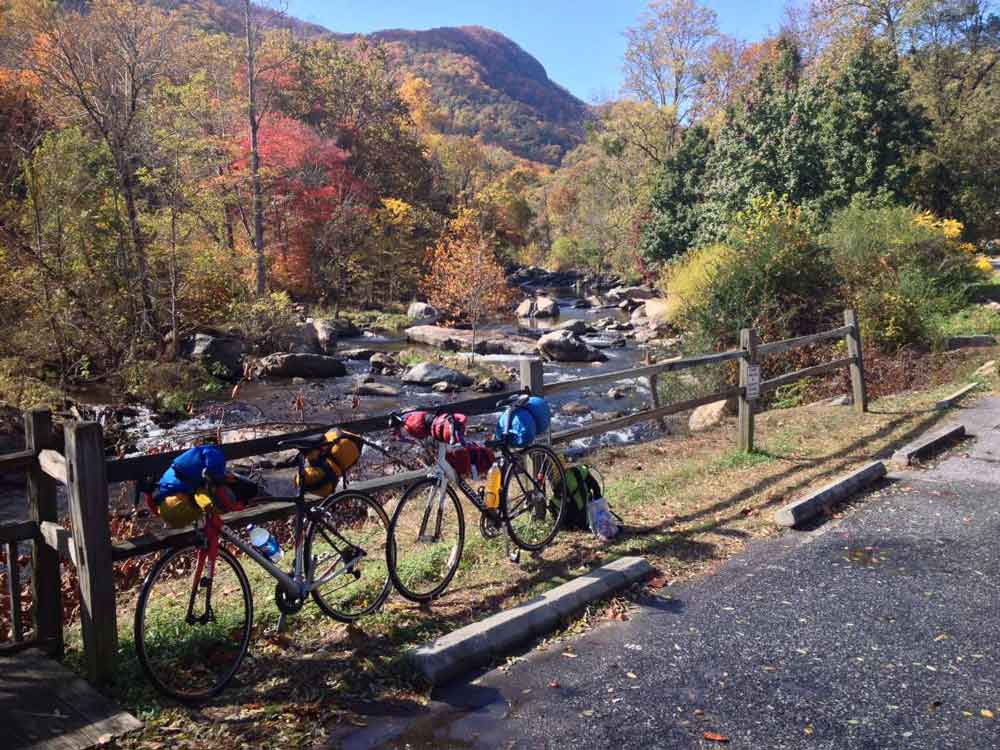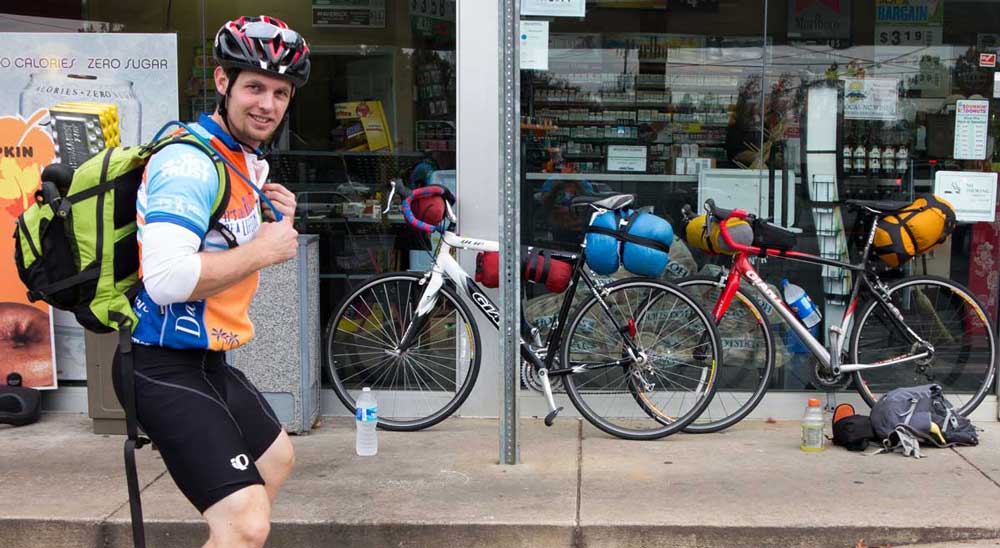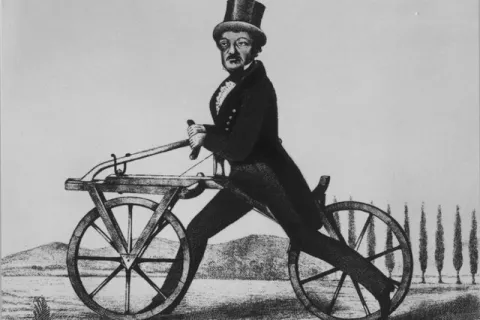Riding 4,000 miles across the country gave me plenty of time to think about all of life's intricacies and plenty of time to scold myself for over-packing my bicycle. Nothing can ruin a trip like realizing you've been too liberal with your packing and purchasing habits. If there was one very apparent conclusion that I reached after months on the open road, it was that the weight of my bike directly correlated with how much fun I was having. At the end of the day, I felt less physically and emotionally drained when I packed lighter. This past October I decided to take this idea to the extreme--I packed my bike so light that my total gear weight dropped from 40 lbs. to about 15 lbs. by being just a little more frugal with what I brought along. The end result was the best bike tour that I've ever done! After 3 weeks and 800 miles, I was convinced that ultralight is they only way to go. Here are 10 tips that will help you to pack lighter:
1. Opt to use a road bike instead of a heavy touring bike--there's nothing like having the mobility and weight savings of a road bike, especially when you want to pull big-mile days. However, don't sacrifice a comfortable seating position to be more aerodynamic--the point is to see the beauty around you, not to be tucked down gritting your teeth. Make adjustments for a more comfortable handlebar position and consider upgrading your tires to something a bit more durable.
2. Use waterproof/resistant stuff sacks or dry bags instead of panniers--this is dependent on the length and demands of your trip but these will do just fine on a tour where you'll be near civilization most of the time. I used two silnylon stuff sacks on a three-week trip in the southeastern U.S., the perks of this method is that my DIY panniers weighed only ounces (compared to traditional panniers that weigh several pounds) and it cost no more than $60. I attached mine to the handlebars and under the seat.
3. Plan according to the season--depending on when you have a trip, you might need more or less gear. In colder temperatures, plan for more weight because you'll need extra food, gear and clothing. My favorite times to tour are early fall and late spring because the mild weather means I can cut down on weight.
4. Scrutinize the weight of everything you pack (and I mean absolutely everything)--we've all heard of people cutting off extra cords and labels from gear, and some will even go as far as cutting off toothbrush handles to trim extra ounces! My advice? Do it enough and it all adds up! Cutting a pound of useless junk from your cumulative weight means more room for something else you might want to bring along. I use travel-sized soap, toothbrush, toothpaste and other toiletries knowing that I'll ride past a store sometime during the week to resupply. I've found that trips aren't usually as rural as I expect them to be, and if they are, there's no need to be hygienic! (Only joking.)
5. Use the three-pile method--make one pile with things you absolutely need (helmet, sleeping bag, smart phone, etc.), the second pile with things you "might need" (pillow, sit pad, etc.), and the third with everything that you'd like to bring along (let your imagination run wild). Now, take everything from the first pile, nothing from the second pile, and one thing from the third pile. It's a good way to keep yourself in check by assessing what you need vs. what you want.
6. Travel with a friend--there is no better way to pack lighter than to have the opportunity to split the weight of gear with a travel companion. Sharing things like a medical kit and a cooking set is a great way to save on extra weight and expenses!
7. "Credit card touring" is a thing of the present and the future--if you really want to save weight, treat yourself by buying all your meals along the way and sleeping at inexpensive hotels. All you'd really need is a change of clothes, some spare parts and a daypack to keep small things in. I find that the cost of all this is more reasonable when trips are shorter. The benefit? Almost completely unhindered riding, a warm shower and a nice bed every night.
8. Liquids are some of the heaviest items on your bicycle--one liter of water weights more than two pounds! I've found that proper planning (asking locals, consulting maps, or knowing the area well) and resourcefulness allow you to minimize the amount of water you need carry with you. There are times when it's good to stock up on water but I've found that most of the time there is never a need to over-pack because there are gas stations and convenience stores littered across the country. I always have purification tablets with me that will zap nasty stuff from water in case of emergency. The same goes for packing liquid toiletries--do you really need to carry different soap for your body and another for your hair? I think not!
9. Stay fit so you don't quit--one of the best ways to shed some weight is to lose some body weight! Proper fitness and training isn't only a great idea for your health before your trip but also a painless way to lighten up your load. Why spend thousands of dollars upgrading to lighter equipment when you could do the same for a fraction of the price? Even better, come travel with me on a Backroads trip and jump start your training with a week in California, Utah or even New Zealand. A compromise between good physical shape and quality lightweight gear will play a big role on how you feel during difficult days of riding.
10. Adopt a minimalist mindset--part of going on a cycling trip is to get away from all the fuss and clutter that typically runs rampant through our lives. Take all the things you'll need (it's different for everyone) and challenge yourself to see how much of a minimalist you can actually become. I promise you one thing: the lighter you pack, the better you'll feel, and the more excited you'll be to spend another day exploring our beautiful country from the seat of a bicycle!










